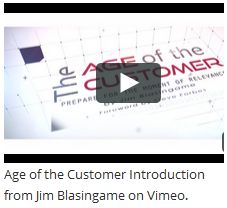For 10,000 years, business leverage has come from three asset categories, shown below in chronological order of appearance:
- Muscle power: human or animal
- Tangible stuff: raw material, buildings, inventory, machines, etc.
- Intangible stuff: Patents, trademarks, copyrights, trade secrets and other intellectual property
 For most of history, business power was heavily weighted on the first two categories. First the strongest caveman and biggest horses had the advantage. Later the fastest ships and largest factories got the jump on lesser competitors. For a small business it sounded like this: “We have the largest inventory in the tri-county area.”
For most of history, business power was heavily weighted on the first two categories. First the strongest caveman and biggest horses had the advantage. Later the fastest ships and largest factories got the jump on lesser competitors. For a small business it sounded like this: “We have the largest inventory in the tri-county area.”
But, as revealed in a study by IP attorney Kenneth Krosin, intangible assets became a powerful force in the latter third of the 20th century. Krosin discovered that at the end of the 1970s, corporate balance sheets were represented by 80% tangible assets and 20% intangible. But in 30 years, by 1997, the ratio of assets had essentially inverted to 73% intangible and the rest tangible.
Here’s what small businesses should take away from the breathtaking explosion of IP revealed by the Krosin study:
• The power of IP is no longer the wholly-owned franchise of big business.
• For centuries intellectual property provided only a marginal advantage even for big business, but has become a two-edged sword – one edge provides opportunity for those who leverage intangible assets more and tangible less, and the other edge delivers disruption for those who don’t.
• Exciting Internet resources and other digital innovations are converging and coalescing in front of our eyes to make intangible assets a much more powerful lever for all businesses.
• IP in the form of digital assets has evolved from two-dimensional tools, like websites, to add the third dimension of a virtual marketplace in cyberspace, aka The Cloud.
• Just because a small businesses may never reach 73% intangible assets doesn’t mean it shouldn’t have an IP strategy.
• Your IP strategy should include acquired intangible assets, like software, as well as the kind that you create, like a business process you maintain as a trade secret.
In The Age of the Customer, a small business must have an IP strategy that’s born from the acknowledgement that it is integral to the performance of virtually every talent and task in your business, and required to maintain marketplace viability.
What does your IP strategy look like?




